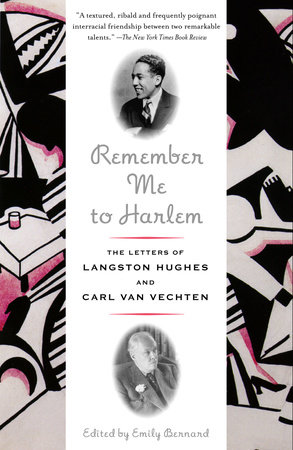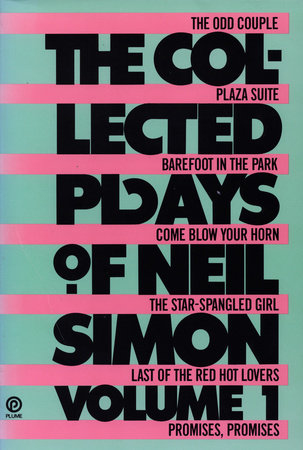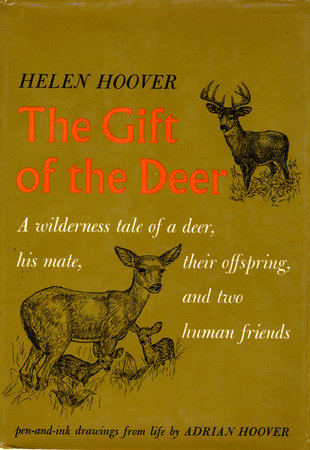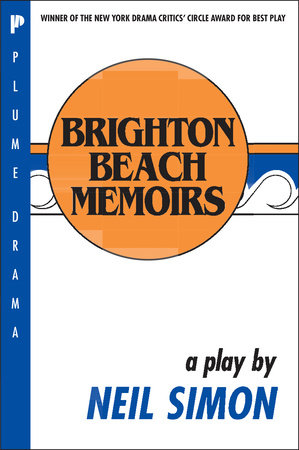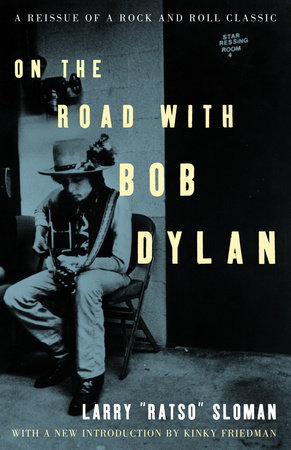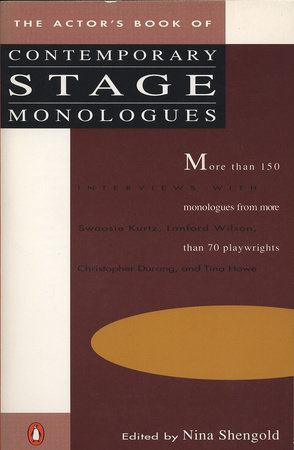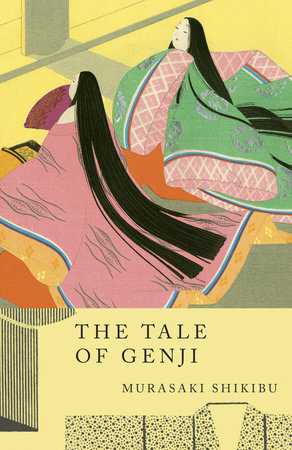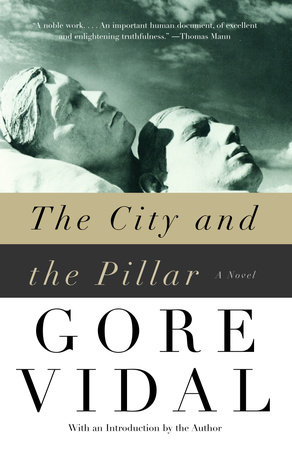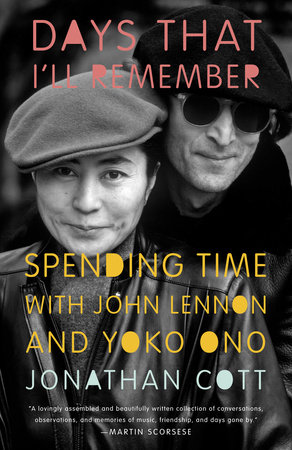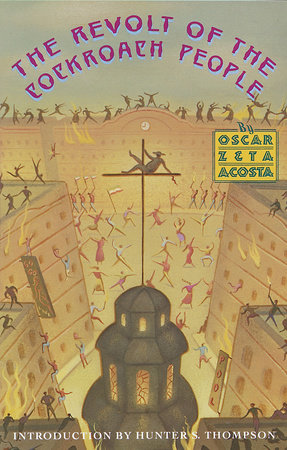A Conversation with
Emily Bernard
editor of
Remember Me to Harlem
The Letters of Langston Hughes and
Carl Van Vechten, 1925-1964
Q: How did you come to put this book together? What was it about these two literary figures that you were drawn to?
A: Carl Van Vechten was the hook that drew me into this project. I remember sitting in a classroom during my junior year in college and feeling outraged–and curious–when I heard the professor tell us that a white Harlem Renaissance figure had written a book called Nigger Heaven. I had to know more about him. What I learned was enticing, unsettling, and even liberating, and really challenged for me the simple thinking about race and racial alliances that was dominant on campus. Black writers of the period–Langston Hughes, Zora Neale Hurston, Nella Larsen–saw Carl Van Vechten as a kindred spirit, and even encouraged him to test the racial barriers that stood between them through writing and other kinds of cultural expression. What they shared was a commitment to artistic freedom; this commitment transcended biological limitations. It wasn’t long before I preferred living there–in the world of the Harlem Renaissance–to the very conventional, line-in-the-sand, black or white world to which students were clinging so desperately at Yale in the mid-1980s. Seventy years earlier, black intellectuals were talking about identity as a much more fluid, more imaginary way of classifying yourself. The idea thrilled me.
Q: While Langston Hughes is still well-known today, Carl Van Vechten’s reputation has fallen off quite a bit from his heyday in the first half of the 20th century. Why do you think that is and does it have much to do with his controversial novel from the ’20s, Nigger Heaven?
A: It’s difficult to assess the actual damage that Nigger Heaven did to Van Vechten’s career. In some ways, it helped: he was a very popular novelist before, but after the publication of Nigger Heaven, his name became familiar in even the most remote corners of the world. He certainly shook people up, and if you belong to the "all publicity is good publicity" school, then the book was a great success.
I believe Van Vechten was profoundly wounded when black readers, generally speaking, failed to take to Nigger Heaven. He always talked about it as his most serious novel; he felt he had captured something essential, in his book, about the black cultural world around him–several black friends felt he had, as well.
I don’t think it’s fair to say that Van Vechten’s career fell into "decline," after Nigger Heaven, but it is significant that he took up other avenues for his creative and intellectual expression, and only wrote one more novel, Parties (1932), that even his wife thought was something of a disaster. After putting his novel-writing career to bed, Van Vechten became an ardent photographer and archivist, and continued to oversee the careers of friends like Gertrude Stein and Chester Himes. Van Vechten was greater and more important as a visionary than he was a novelist; everything he did–save his novels–was of prophetic importance. Unfortunately, the kind of "background" work at which he was so skilled ensured the lasting fame of those he discovered and promoted, but not his own.
Q: The Harlem Renaissance itself–and certainly as it comes across in these letters–was an amazingly energetic and exciting time, suffused as it was with the music and rhythms of the Jazz Age. What do you see as the reason for this flowering of art and literature at that particular time and that particular place in the 20th-century?
A: Like most cultural movements, the Harlem Renaissance came into being largely because of historical and social conditions that enabled it to flourish. The early years of the 20th century were also the years of the Great Migration, when scoresof blacks fled the racism and violence of the South in search of justice and the promise of jobs in the North. Between World War I and World War II, two million African-Americans had left the South. The concentration of blacks in cities like Detroit, Washington, D.C, Philadelphia, and Chicago–in addition to post-World War I economic prosperity–made the cultural blossomings that occurred in all of these cities possible.
Harlem had a unique claim on the black imagination because of the simultaneous and interconnected social revolutions that were happening all over New York, what with the Jazz Age, the agitation for women’s voting rights, and various other political struggles that were finding sympathetic audiences in New York.
For literary hopefuls, New York was crucial because it had recently become the center of American publishing. And publishers like the Knopfs and other Jewish publishers were in a position, because of rampant anti-Semitism in the industry, to consider types of writing that fell outside of the mainstream, like new black writing. It was because of all of these things that a black Harlem Renaissance writer like Langston Hughes found himself publishing with Alfred A. Knopf, Inc.
Personally, I am partial to the glamour, the drama, and the sense of hopefulness that were all essential parts of the Jazz Age, as well as the Harlem Renaissance specifically. But there were equally important and glorious movements that preceded it. Consider the nearly unbelieveable achievements of black writers who managed to compose narratives in the age of American slavery. Post-emancipation writing by Frances Harper and Pauline Hopkins (among others) bears witness to the atrocities of Reconstruction, the forgotten promises, the enduring hope, and the unquenchable belief in justice, right over wrong, and the spirit of black people.
And it’s not until the Harlem Renaissance is more or less over and done that we hear the voices of Richard Wright and Zora Neale Hurston. When the Civil Rights era begins, black writers make the remarkable decision to actually forge an entirely new aesthetic. In part they make this choice as a way of rejecting the philosophies of the Harlem Renaissance. But the similarities in both of these movements is actually a fascinating story in itself.
This is not to deny the singular splendor of the Harlem Renaissance. But to call this movement the "most" important movement, more significant than any other, would be to say a table is better off without its legs. Which is to say, in the end, it’s all of a piece, all part of a continuum.
Q: How much a part of it/agent of it were Hughes and Van Vechten?
A: Hughes and Van Vechten lived fully and deeply in their times. Which is to say, they were both exceptional and entirely typical of the kind of energy, enthusiasm, risk-taking, ground-breaking, forward-looking spirit of the Harlem Renaissance. They were unusual in that they seemed to know "everyone"–they saw promise in the most unasumming domestic servants (Gaston LaChaise’s one time maid was Mary Bell who Van Vechten promoted as a painter) and the most unpopular trends (Hughes was a huge supporter of African writing before it had any currency in the States). What connected them, is a shared belief that they could make things happen. They understood that they were living at a very special period in American history, and they believed they were alive to make their marks–and to help others make theirs. But many people felt that way, and that burning sense of purpose that so many carried is what makes this movement so powerful.
Certainly what distinguishes this relationship from many other fascinating patron-beneficiary relationships in world history is race. Carl Van Vechten fell in love with black culture at a time when African-Americans were in every way disenfranchised from American culture. Van Vechten was compelled to go against the grain and support black art, and his passion helped get black writers published, black art seen, and black music heard.
He did all this without the kind of dispassionate intellectualism we associate with liberal "tolerance," but with the fervor of the convert. This is what makes his career as a supporter of black art so exciting to me, that he lived and breathed it without shame, detachment, or self-conciousness.
The correspondence between Hughes and Van Vechten is even more significant when you think about the times. Remember, this was pre-desegregation. It was nearly illegal for blacks and whites to have anything save the most impersonal kinds of relationships. Of course, whites employed blacks in various intimate capacities (cooks, maids, etc.) and these relationships generated their own kinds of bonds. But blacks and whites were legally barred from congregating socially in public. There may have been a few places in Harlem that accepted black and white patrons, but as soon as whites began to populate these spots heavily, blacks were barred from their premises, or assigned to segregated seating.
During the 1920s and well into the 1950s in New York, black and white people could form equal relationships in only the most intimate of spaces: the private home, and the page. Van Vechten covered both. He carried on numerous correspondences with black writers and artists and he had legendary–and unique parties–that claimed as many black bodies as white ones.
So, letters provided one of the very few places for Langston Hughes and Carl Van Vechten to come together. Their correspondence has a special importance because it was one of the few sanctioned spaces for them to form a bond.
Q: Through their correspondence, we get many glimpses of an amazing array of artists and friends: from Zora Neale Hurston, H.L. Mencken, W.E.B. Du Bois, Marian Anderson and Bessie Smith to Nella Larson, Countee Cullen, Miguel Covarrubias, Dorothy West, James Weldon Johnson, and even their shared publishers, Alfred and Blanche Knopf. What did you learn about these people and their times through the letters and your research that you didn’t know before?
Once I started reading their letters, I came to know all the people you mention as human. Previously, I had seen them as larger than life, less people than historical phenomenons. I suppose that’s the risk you take with spending too much time in graduate school. Spending time with the personal effects of Hughes and Van Vechten was like a revelation. I came to admire them even more for how much they laid open for future eyes–like mine–to see. They revealed a lot in their letters, and then made sure those letters–with their embarassing passions, speculations, and gossip–would be archived. I think it’s very brave to offer your life for the instructions of others. It takes bravery and also a special faith in humanity.
Q: How long have you been working on this project and how difficult was it to cull and then select from nearly 40 years of correspondence as well as to annotate them?
A: Over five years ago, I was sitting in a temporary apartment in Brooklyn (I had gone AWOL from Yale graduate school, AGAIN) talking with a close friend on the phone, and the conversation drifted to the letters and what a good book they would make, how a real scholar, a real writer could make a wonderful story out of the correspondence. This particular friend had heard me say the same thing at various times over the five preceding years and she had HAD it. "Why don’t YOU do the book? Don’t you realize that the person you are waiting for is you?" I wrote the proposal that night, but it would take almost two years to work out the details of the contract. I couldn’t bear to begin working on it until everything was final.
I worked on this project, off and on, for about four years. In between, I finished my dissertation and got my Ph.D.; I got my first teaching job and moved; I had a few disastrous relationships; and then I fell in love with my fiance. As many times as I changed my mind about numerous things over that four year period, my fascination with these men and their friendship never diminished. It was the one constant in my life and I am not a little sorry to see it go.
To me, every letter was fascinating, whether because of the salutations, the choice of stationary, the way it was folded, all of it. It was a tiny bit heartbreaking to leave out each one of the several hundred that didn’t make the final cut. But as I learned to do this–edit–I learned the difference between having an idea and making a book that people will actually read.
Annotating these letters was a challenge. Hughes and Van Vechten loved to name drop, a penchant that’s as delightful for the reader as it is tedious for the editor. I learned my way around various libraries with the help of various and very skilled assistants.
One of the great pleasures of compiling this book was the education I acquired in the process. Hughes and Van Vechten were intricately embedded in the world of black theatre, music, film, and literature. I discovered whole careers–whole lives–of people I had never heard of but who were glamorous, promising, respected, fascinating. It became my small mission to revive them again in Remember Me to Harlem, but finally, the book wasn’t about them, so I was forced to consign them to footnotes. And that was the most fascinating, important lesson I learned over the course of doing this book. This was about the fleeting, ephemeral nature of celebrity. Van Vechten’s isn’t the only story of fame-to-obscurity in the book; there are many more between the lines, and in the footnotes.
Q: For many years, these two friends would invariably sign off their letters with affectionate though slighly zany phrases, such as "Snowballs to you" or "67 Harlem hoofers in red pants doing the Lindy Hop with razors between their teeth to you!" What was that about?
A: Their salutations form their own story, I think, and often include references to the historical changes which they were witnessing. For instance, in a November 2, 1939 letter, Hughes ends with: "Gas masks and gardenias to you." And on December 3, 1957, Hughes says goodbye to Van Vechten with: "Simple blessing to you in this sputnik world." Van Vechten’s salutations seemed to depend solely upon his imagination. A sign-off like "116 Harlem Blackbirds with fallen arches & ivory teeth to you," has to be appreciated for its poetry, its whimsicality, as opposed to any social or political significance. Van Vechten was a master of these turns of phrase; he sprinkled them in all of his correspondence. Hughes, on the other hand, tended toward the simple "sincerely," particularly when he was busy, and Van Vechten detested that. He wrote Hughes on November 19, 1957: "I wish to GOD you would stop signing yourself ‘sincerely.’ One is sincere with the butcher. It is taken for granted one is sincere with one’s friends. Certainly I get letters from no one else in the world with such a conventional signing off." Hughes more than made up for his slip in his next letter, dated November 30, 1957: "Yours with pomegranates, sequins, gold dust, and melon seed from here on unto the end, Langston."
The title of the book comes not from a salutation, actually, but from the last line of a May 15, 1925 letter from Hughes to Van Vechten. Generally, as I said before, Hughes wasn’t big on fancy sign-offs, but this was easily one of the most haunting, evocative lines of the book. Because the interesting thing about the Harlem Renaissance is how few of the significant figures of the period actually lived in Harlem during its heyday. Hughes, for instance, was abroad for much of the time that Harlem was kicking. The title refers in part to Hughes’ literal absence, and also how much Harlem resided in the memories and the fantasies of those who would never make it there, or were called elsewhere. The title, too, refers to Van Vechten’s having been cast off, denied by so many. Yes he remained as faithful to the place as well as to the "idea" of the place, as anyone. It refers, I think, also to his rage in the later years about having been forgotten, a rage that only testified to how much he wanted to be remembered.
Q: Aside from music, they talk to each other about literature and publishing a fair amount. Was theirs a mentor/pupil relationship at all when it came to writing?
A: Van Vechten was entirely responsible for the publication of Hughes’ first book of poetry, The Weary Blues. Not only did he talk Alfred Knopf into taking the book, he offered Hughes some advice about how to arrange his material. This became a pattern in their friendship for quite some time. For years, Hughes would first share his manuscripts with Van Vechten before anyone else. In later years, Arna Bontemps displaced Van Vechten as a first set of eyes.
It’s interesting that Hughes enlisted Van Vechten as a critic so readily, because they had dramatic differences of opinion about the nature and purpose of Hughes’ writing. Their disagreements began in the late 1920s when Hughes began writing poetry of a more explicitly political nature. Van Vechten was opposed to this kind of thinking in general; he believed there was a natural separation between art and politics. There are some biting albeit hilarious letters throughout the collection when the two of them really butt heads over this issue. In the end, I think these kinds of disagreements are what made their friendship so vibrant. Hughes could always count on Van Vechten to tell him the truth about his writing, even when he wrote letters that contained lines like: "I think you are pretty nearly through with poetry."
Q: Although Van Vechten was married, and Hughes occasionally dated women, their sexual preferences seem to have run counter to that, with Van Vechten’s affairs with men well-known. Was that something they openly shared with each other?
A: Van Vechten writes to Hughes on June 4, 1925: "There are so many things that one can’t talk about in a letter." I’ve often reflected on what he meant here. There are several moments like that in the collection, when you get a feeling that much is being said between the lines. For instance, what did Hughes mean when he signed off to Van Vechten in August 28, 1960: "Call Boys and Call Boards to you"? Both of them were a bit too old for call boys (although, one should never put anything past Van Vechten), but perhaps they had had some conversation in which they reminisced about the old days. We’ll never know. There is an intimacy beyond the intimacy that’s available to us on the page, but anything I could say about it would be pure speculation.
I can’t speak authoratatively about Hughes, but I will see that every record indicates that Carl Van Vehcten was a man of enoromous appetities. Besides a very passionate, very intimate 50-year marriage to Fania Marinoff, Van Vechten was devoted at least three times in his life to long term relationships with men–Donald Angus, Mark Lutz, and Saul Mauriber. All of them come up in the letters and in even more detail in his diaries. All three relationships eventually gave way to life long friendships. These were not ordinary, ‘Hi, how are you doing’ friendships: Carl Van Vechten and Mark Lutz wrote letters to each other every day for 33 years. EVERY SINGLE DAY. Lutz wanted Van Vechten’s letters to him destroyed when he died, and they were. His letters to Van Vechten are still housed in the Beinecke Library at Yale. They are full of tiny details about Lutz’s days. Imbedded in them is a wish to involve Van Vechten in every aspect of his life.
There are scrapbooks at Yale that add another chapter to Van Vechten’s complex sexual identity. In addition, they form another archive, this one about pre-stonewall gay American history. In this one, Van Vehten collected articles about gay bashings, drag balls, and scandals about well-known individuals caught with their pants down. They also contain photographs and cartoons both highly pornographic and highly camp. Very little has been said about these scrapbooks. They will make a wonderful resource for a curious scholar.
Q: The photographs are fabulous. Where did you find them?
A: The photographs, like the letters, are housed at the Beinecke Rare Book and Manuscript Library at Yale University. There are also some wonderful photographs relating to Van Vechten at the New York Public Library.
Q: Do you have plans for another project after this one?
A: This project has got me thinking a great deal about interracial friendships and the people who have them, maintain them often in the face of considerable odds. These unions cause rifts in families, the workplace, in public arenas, and in our other relationships. They exist despite ignorance, racism, convention, and apathy. If they were nearly impossible to nurture in the 1920s, they are still as rare today. Look in any restaurant, bar, look around you at the next party or social event you attend. How many of these gatherings are truly integrated, with people of different races actually interacting in an intimate way? The reality can be disheartening.
At the same time, on the street every day, I see groupings of young people that truly astound me. They have adopted mannerisms, speech patterns, and aesthetic sensibilities from groups entirely different from their "own." In fact, they have claimed the "other" as their own. They refuse to obey conventions, the dictates of parents and peers, the "natural" social order. Will this exploration last forever? Probably not. But in the meantime, what are they finding out about themselves, about the nature of friendship?
I think interracial friendships exist in a category by themselves. They are confronted with challenges different from those that confront interracial romantic relationships, which, after all, provide the pleasures and comforts of sex and domestic intimacy. Friendships, true, lasting friendships, in general, are harder to cultivate or even maintain as we get older. You graduate, move, change jobs, start seeing someone, and your friendships fall by the wayside. I’m amazed and inspired when I see and hear about people who have maintained close friendships in spite of all these pulls, and racial difference, too. It’s also quite interesting to encounter people who’ve decided that the challenges of interracial friendships are too difficult for them to face.
My next project will be an anthology of personal essays on interracial friendships as people really live and experience them. So many people of various races, ages, who’ve grown up in radically different regions, have different class backgrounds and sexualities, are forging interracial friendship that are as inspiring, discouraging, amusing, frustrating, and instructive as the one between Langston Hughes and Carl Van Vechten. I want to hear their story.
